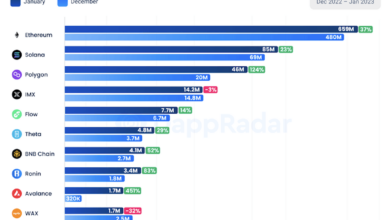OpenView goes bigger with seventh fund, closing on $570M to invest in business software startups

Three years after announcing its sixth fund, OpenView Venture Partners is back with $570 million in capital commitments for its new, seventh fund. It represents a 25% increase over the firm’s $450 million sixth fund, touting that it is its largest to date.
The Boston-based venture capital firm gave its intent to raise the fund back in January 2022, according to an SEC filing that noted OpenView intended on a hard cap of $800 million. In another filing made last September, the firm reported it had raised just over $517 million toward that goal.
“The way that we’ve always built the firm and the funds is to stay relatively small and concentrated,” Mackey Craven, OpenView partner, told TechCrunch. “When we went out to raise the fund, the way we size them is bottoms up: looking at how many partners we have, the average investment size they make, how many investments we make in a year and how many years we want to be out. That gives you a range, and that range is from right about where we closed the fund.”
The firm will continue to focus its investments on “high-growth software startups,” investing globally across business software categories, including infrastructure, applications, cybersecurity and vertical software.
While there is some turmoil in the financial markets and the banking system, Craven says the product markets for software, looking broadly, “are stronger than they’ve ever been.” He notes that global software spend is about twice what it was five years ago and is still growing at double-digit rates.
He attributes that growth to what he called a “go-to-market model” for software companies for product-led growth, a term that Craven said was coined years ago by partners Kyle Poyar and Blake Bartlett to describe what was making businesses more efficient.
We profiled OpenView in 2020 when it closed on its sixth fund, and in terms of when it invests in companies, Craven told my colleague Alex Wilhelm that the firm looks for companies that have between $1 million and $10 million in annual recurring revenue.
Three years later, Craven said that criteria hasn’t changed much, explaining that OpenView tends to be the first investors in a company after it is generating revenue, no matter if they were bootstrapped or venture-backed before that. For example, he said his first investment was in cloud monitoring platform DataDog after it had $1.7 million in ARR.
“It’s more than 1,000 times larger than that right today, but that’s very similar in the scale of businesses that we’re investing in right now,” Craven said.
Kyle Poyar further explained, “It’s more about the underlying qualitative characteristics of the business. It says specifically, we’d love to see the company find product market fit with their customers, and they’re showing signs that they’re ready to scale with building out their teams and their go to market motions. That tends to correspond with that revenue range rather than the revenue range being the focus.”
When asked how different it was to go after funding in today’s economic climate versus when OpenView was raising for its sixth fund, Craven responded, “it absolutely is a more challenging fundraising environment,” but that the firm’s core partners have worked together for over a decade, so there was still a “strong set of supportive limited partners” who were receptive to getting in on another fund and one that was also larger.
OpenView invested in 16 companies with its sixth fund and expects with its seventh fund — being 25% bigger — it could invest in up to 20 companies over the next few years.
As of today, the firm made its first investment from Fund VII in a company called Rewst, which is doing robotic process automation for the managed service provider sector.
“Rewst is in a combination of themes we’re excited about, like vertical software and the increasing automation of software workflow,” Craven said. “It turns out that in the managed services ecosystem, the vast majority of the work that they do, and outsource, is workflow-oriented. The entrepreneur has built a business in this space before and is off to a great start.”
Meanwhile, business software spending is expected to grow despite analyst predictions that consumers will scale spending. When it comes to trends within this area that the firm is following, Craven said that companies are continuing to spend in areas that deal with risk, for example, cybersecurity.
Another is automation: Companies rely increasingly on software instead of on people to do some of those activities. As a result, the firm is looking at domain-specific applications of machine intelligence and software around integrations, automation and workflow, he said.
Poyar also said vertical software and product-led growth are two additional themes that will continue to be among investments.
“Regarding vertical software, there’s a lot of folks who really need software, but don’t have great solutions because that is a market that has historically been underserved by software players,” Poyar added. “We coined the term ‘radical growth’ in 2016 because of trends we were seeing in the software market. That’s now a part of the market that is continuing to grow as product-led businesses. By just building products that customers love, they are growing in a way that’s more efficient and more effective than their peers.”
OpenView goes bigger with seventh fund, closing on $570M to invest in business software startups by Christine Hall originally published on TechCrunch
